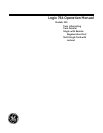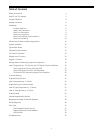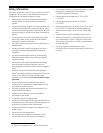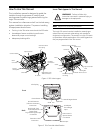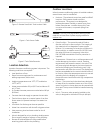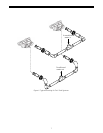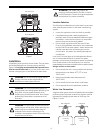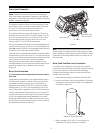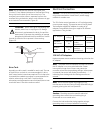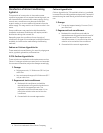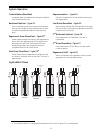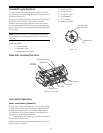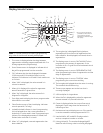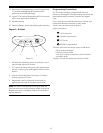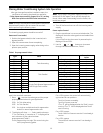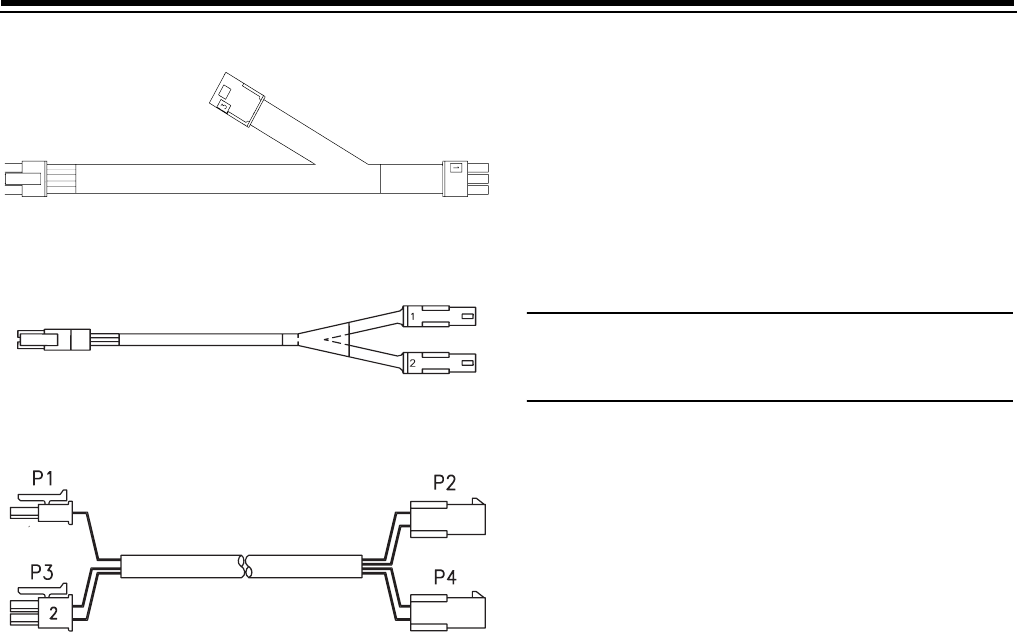
6
Figure 3 Remote Start/Multi-Tank Lockout Cable
Figure 4 Twin Sensor Cable
Figure 5 Twin Cable Extension
Location Selection
Location of a water conditioning system is important. The
following conditions are required:
• Level platform or floor.
• Room to access equipment for maintenance and
adding regenerant (salt) to tank.
• Ambient temperatures over 34
o
F (1
o
C) and below
120
o
F (49
o
C).
• Water pressure below 120 psi (8.27 bar) and above 25
psi (1.7 bar).
• In Canada the water pressure must be below 100 psi
(6.89 bar).
• Constant electrical supply to operate the controller.
• Total minimum pipe run to water heater of ten feet
(three meters) to prevent backup of hot water into
system.
• Local drain for discharge as close as possible.
• Water line connections with shutoff or bypass valves.
• Must meet any local and state codes for site of
installation.
• Valve is designed for minor plumbing misalignments.
Do not support weight of system on the plumbing.
• Be sure all soldered pipes are fully cooled before
attaching plastic valve to the plumbing.
Outdoor Locations
When the water conditioning system is installed outdoors,
several items must be considered.
• Moisture – The valve and control are rated for NEMA 3
locations. Falling water should not affect
performance. The system is not designed to
withstand extreme humidity or water spray from
below. Examples are: constant heavy mist, near
corrosive environment, or upwards spray from
sprinkler.
Caution:
This unit is for dry location use only unless
used with a Listed Class 2 power supply suitable for
outdoor use.
• Direct Sunlight – The materials used will fade or
discolor over time in direct sunlight. The integrity of
the materials will not degrade to cause system
failures. If it is necessary to locate the conditioner in
direct sunlight, an outdoor cover (PN 1267811) over
the valve and control is necessary. Valve skirts
(PN 1267808) are available if further protection is
required.
• Temperature – Extreme hot or cold temperatures will
cause damage to the valve or control. Freezing
temperatures will freeze the water in the valve. This
will cause physical damage to the internal parts as
well as the plumbing and conditioning resin. High
temperatures will affect the control. The display may
become unreadable but the control should continue
to function. When the temperature returns to normal
operating limits the display will re-appear. A
protective cover should assist with high temperature
applications.
• Insects – The control and valve have been designed
to keep all but the smallest insects out of the critical
areas. Any holes in the top plate can be covered with
duct tape. The top cover should be installed securely
in place.
• Wind – The cover, when properly installed on the
valve, is designed to withstand a 30 mph (48 Kph).



